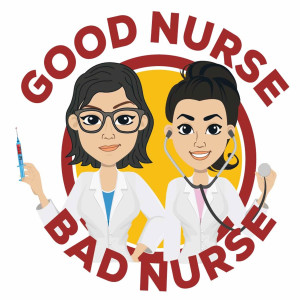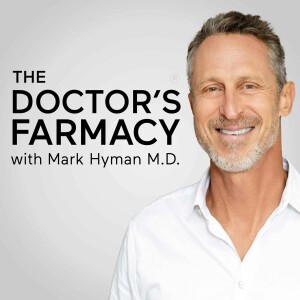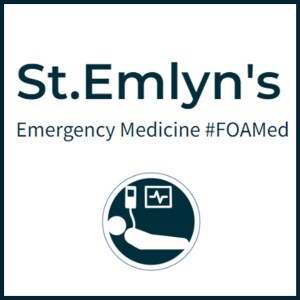The latest CAN is one of our brand-new 'revision editions' -- brief podcasts aimed at covering the essentials of critical appraisal for medical students and junior doctors preparing for exams.
With the help of Gregory Yates, an academic doctor based in Manchester, this episode introduces two core concepts: sensitivity and specificity. These are two ways of thinking about the accuracy of a diagnostic test. Knowing the sensitivity and specificity of an investigation will give you a decent idea of how it should be used in the emergency department.
Sensitivity (Sn) describes the chance that a test will be positive if your patient has the condition you're testing for. Some people call it the 'true positive rate' or alternatively the positivity in disease (PID) rate. If you need a hand remembering it, you can always remember that PID is a sensitive issue.
Meanwhile, specificity (Sp) considers the chance of a test being negative if the patient doesn't have the condition you're testing for. It's the 'true negative rate' or alternatively the negativity in health (NIH) rate. There are times when we particularly need a test to have a high sensitivity. This is generally when we want to be particularly confident that a test accurately identifies everyone with the relevant condition because we really don't want to miss it. We need a high sensitivity to rule out disease. (Sn-uff it out). At other times, we need to be confident that a patient with a positive test actually has the disease - for example, if the treatment is unpleasant or involves exposing patients to risk. In that case, we want a high specificity to rule in disease. (Sp-in it in).
In this CAN, we use D-Dimer as an example of a very sensitive investigation: it’s positive in nearly 100% of cases of venous thromboembolism. Specificity describes the likelihood that the test will be negative if your patient does not have the disease. We use HbA1c as an example of a highly specific investigation: it’s rarely used in the emergency department, but if it’s elevated, we can be almost certain that the patient is diabetic. HbA1c is almost never (
More Episodes
Ep 168 - COVID-19 Journal Club #5 (May 2020)
 2020-05-15
2020-05-15
 4.0k
4.0k
Ep 167 - Troponin Update and LoDED Study Review with Rick Body
 2020-05-13
2020-05-13
 4.0k
4.0k
Ep 166 - COVID-19 Journal Club #4 (May 2020)
 2020-05-07
2020-05-07
 4.0k
4.0k
Ep 165 - April 2020 Round Up
 2020-05-03
2020-05-03
 3.6k
3.6k
Ep 164 - COVID-19 Journal Club #3
 2020-04-30
2020-04-30
 3.9k
3.9k
Ep 163 - COVID-19 Journal Club #2
 2020-04-25
2020-04-25
 4.0k
4.0k
Ep 162 - Beyond the ED: COVID-19 and Critical Care with Dan Horner
 2020-04-22
2020-04-22
 4.0k
4.0k
Ep 161 - COVID-19 Journal Club #1
 2020-04-15
2020-04-15
 4.6k
4.6k
Ep 160 - March 2020 Round Up
 2020-04-05
2020-04-05
 4.2k
4.2k
Ep 159 - Covid 19. Lessons from Sports and Exercise Medicinewith John Rogers and Nathan Lewis
 2020-04-02
2020-04-02
 4.6k
4.6k
Ep 158 - Understanding Fear and Anxiety around COVID19 with Liz Crowe
 2020-03-29
2020-03-29
 4.8k
4.8k
Ep 157 - ICU for the non-intensivist with Sarah Thorton
 2020-03-24
2020-03-24
 8.8k
8.8k
Ep 156 - February 2020 Round Up
 2020-03-20
2020-03-20
 4.8k
4.8k
Ep 155 - Covid-19 Podcast from Italy with Roberto Cosentini March 2020
 2020-03-14
2020-03-14
 32.1k
32.1k
Ep 154 - January 2020 Round Up
 2020-02-12
2020-02-12
 4.5k
4.5k
Ep 153 - December 2019 Round Up
 2020-01-19
2020-01-19
 2.6k
2.6k
Ep 152 - November podcast round up on St Emlyn's
 2019-12-23
2019-12-23
 3.9k
3.9k
Ep 151 - October 2019 Round Up
 2019-12-07
2019-12-07
 3.5k
3.5k
Ep 150 - REBOA with Zaf Qasim
 2019-11-14
2019-11-14
 3.7k
3.7k
Ep 149 - September 2019 Round Up
 2019-11-02
2019-11-02
 3.0k
3.0k
Create your
podcast in
minutes
- Full-featured podcast site
- Unlimited storage and bandwidth
- Comprehensive podcast stats
- Distribute to Apple Podcasts, Spotify, and more
- Make money with your podcast
It is Free
You may also like

Good Nurse Bad Nurse


The Relaxback UK Show


On Call With Dr. Anselm Anyoha


The Peter Attia Drive


The Doctor’s Farmacy with Mark Hyman, M.D.

- Privacy Policy
- Cookie Policy
- Terms of Use
- Consent Preferences
- Copyright © 2015-2024 Podbean.com



 iOS
iOS Android
Android